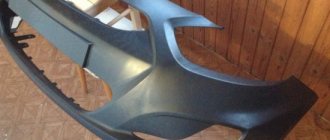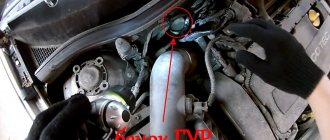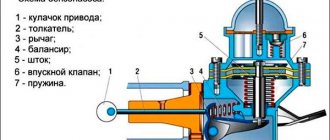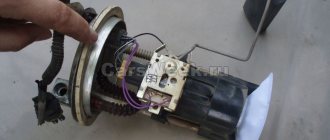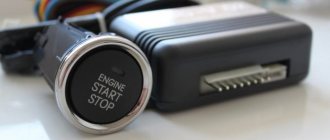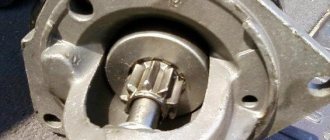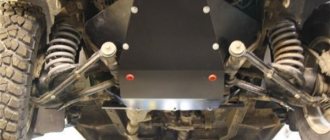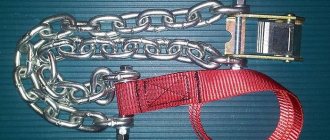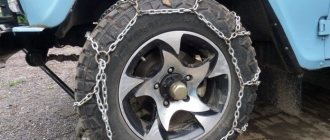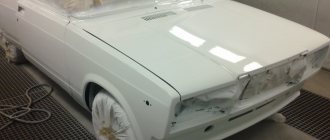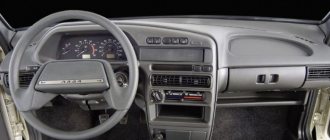WD-40 is one of the most popular lubricants among DIYers. With its help, you can lubricate various fasteners, hinges, get rid of traces of glue, various contaminants, remove rust and much more. For motorists, WD-40 is also an indispensable tool. True, its cost is quite high, and this is especially felt if you have to use it often. For example, a small jar can cost 100-250 rubles, and a large one can cost about 400 rubles. Very expensive! But you can prepare an almost complete analogue of such a product, which will cost 10 times less, but is no worse in effectiveness.
DIY WD-40 in 5 minutes and 100 rubles
WD-40 Do it yourself - universal penetrating lubricant: TOP 3 simple recipes
Who doesn't know VeDeshka?
It has proven itself to be excellent and is even used for catching crucian carp! However, it has one big disadvantage - the price. For one liter of a miracle cure you need to pay about 1 thousand rubles. Therefore, it is not surprising that many began to look for a recipe for making it themselves, and, as will become clear from this article, it was not in vain. So... DIY WD-40 (penetrating lubricant).
Safety precautions
Working away from an open source of flame is the most important requirement that must be taken into account when making a “bucket” yourself. Remember that your health and even life may depend on this!
Since both white spirit and galosh gasoline are extremely volatile and flammable substances, it is necessary to work away from any heating devices with open elements. These can be powerful lamps and, of course, heaters.
The air temperature should be between –40 and +30 degrees Celsius. It is necessary to work in a well-ventilated area. Of course, you should avoid contact of ingredients with mucous membranes and skin.
Recipes from the Kulibins
There is power - no need for WD
To clarify the issue with VD-40, we should start with its official composition - it is more or less known.
- White spirit – 50%
- Volatile hydrocarbons - 25%
- Mineral oil - 15%
- Top Secret Supplement – 10%
There are rumors about the secret additive that it is ordinary paraffin - it is this that has water-repellent properties.
Based on this information, the first recipe appeared, as close as possible to the official WD-40.
Recipe No. 1
To make it you will need:
- White Spirit
- Gasoline "Galosh"
- Mineral oil 5W-30 (40)
- Paraffin
- Container for penetrating agent
The use of paraffin is not necessary, especially if the product will be used to loosen rusty nuts and bolts. It is more rational to use it in cases where the composition will also be used to lubricate any components: for example, garage hinges.
The recipe is as follows:
- 4 parts White Spirit
- 3 parts Galosha gasoline
- 1 part mineral oil
Start by pouring oil into a container (1 part). The use of synthetics is also acceptable.
Add 4 parts of white spirit. If you need to make a water-repellent agent, then molten paraffin is added at this stage. It is better to mix it with a solvent in advance in a ratio of 1 to 50, i.e. for 100 ml of white spirit 2 ml of paraffin.
Add 4 parts solvent
Gasoline "Galosha" is light hydrocarbons. It needs to be added in 3 parts.
Pour gasoline into the composition
Shake well. Homemade WD-40 is ready.
It is interesting to note that the cost of a homemade product is 10 times cheaper than the original WD-40, and the quality is no worse.
If you need a little, you can buy it
Recipe No. 2
Solvent 50 ml
This recipe can no longer be called WD-40 - it is much more serious. According to tests, its lubricating and penetrating properties are several times superior to VD-40.
For penetrating lubrication you will need:
- White Spirit
- rust converter: zinc, zinc and other cheap analogues
- dry lubricant: boron nitrate, molybdenum, graphite, etc.
Pour 1 part of white spirit into the container, in our case – 50 ml.
We add any dry lubricant, in our case it is “forum”.
You can also use graphite, brilliant green, molybdenum, etc.
Add 0.05 parts, i.e. if the solvent is 50 ml, then the dry lubricant is 2.5 ml (half a teaspoon).
A little dry lubricant
Then add rust converter - 1 part.
Any rust converter
Mix well and pour into a spray bottle.
Stir and the product is ready
The resulting lubricant performed well. It was tested for friction, i.e. at what force does jamming of a part treated with this agent occur? The results were in favor of the homemade product: the force applied to the part was five times greater than on it only treated with VD-40.
Volatile (light) hydrocarbons
If everything is more or less clear with the other ingredients, I’m talking about oil and YAT-SPIRIT, and finding them is not so difficult!
But with volatile hydrocarbons, it’s not all clear what they are and where to get them.
We begin to remember what it is. According to Wikipedia, light fractions of oil are called volatile (or light), and the most “easily volatile” ones are GASOLINE or gas gasoline. If you don’t have to languish for a long time, you can take regular petroleum ether or the same gasoline.
However, regular gasoline is volatile, but not so much, so we are looking for a special one. And by the way, there is one – it’s GALOSHA gasoline.
If you believe the composition, then it contains light hydrocarbons!
It is used for gasoline lighters, catalytic heaters, and for diluting oil, bitumen and paint compositions.
How to make a liquid key
A liquid wrench is a universal kerosene-based product that penetrates a rusty threaded connection and allows you to unscrew it without damaging the part. Such a liquid can hardly be called a lubricant. But since it displaces water, dissolves rust and stuck-on parts, in everyday life the liquid key product is sometimes called a penetrating lubricant.
The composition of such a liquid is quite simple; it often includes: kerosene , oil and solvent . Although, depending on small additions, both the properties and the very purpose of such a product will differ. The most popular “liquid key” today is VD-40, but its price is quite high, so car owners are trying to replace such a “miracle product” with another, cheaper, and no less effective one.
In order not to buy a liquid key for your car or household needs at exorbitant prices, you can make a penetrating lubricant with your own hands. There are 9 budget but working recipes for preparing a lubricant similar to WD-40.
Story
Initially, WD 40 was intended for cleaning various surfaces from stubborn stains. During testing, it turned out that the drug simply amazingly corrodes rust. This allows the liquid to be used when dismantling various structures. The first presentation took place in 1953. After which, the drug was used strictly for military purposes for some time. The first batch went on sale in 1958.
Since then, sales have only grown. The version of the name's appearance is curious. According to one of the creators, the composition was obtained after conducting exactly 40 experiments.
Which recipe for the analogue of VD 40 is correct?
There are a lot of instructions and options on the Internet on how to make an analogue of VD 40 . All of them were developed based on available information, according to which the technical aerosol “Vedeshki” includes:
- solvent white spirit - 50%
- propellant, carbon dioxide - 25%
- mineral oil - 15%
- inert ingredients - 10%
It is on the basis of such components that in most cases an analogue of a liquid key is made. But, nevertheless, in pursuit of revealing the secret recipe for WD-40 fluid, there are several options using oil, adding solvents, penetrating liquids (kerosene), preservatives or rust-corroding ingredients.
real recipe was found experimentally . It included the following substances:
- white spirit - 45–50%;
- paraffin distillate - 15–25% (must be heavy and solvent-free);
- hydrotreated isoparaffins - 12–18%;
- carbon dioxide - 2–3% (a mixture of petroleum solvents and paraffin distillate).
Since most of them are not readily available in their pure form, as a rule, several other similar substances are mixed, which also allow you to perform the main task - unscrew a stuck or rusted nut. These more affordable ingredients are often found in every man's garage.
Video.
We all know the wonderful drug WD-40. This is an aerosol preparation that repels water, prevents corrosion, has lubricating and cleaning properties, most importantly (as it seems to me) it has very good penetrating capabilities (if it is used to treat a rusty threaded connection that “does not give in”, then it can be easily unscrewed), You can’t count all the advantages. This drug was developed by an American company and is sold in almost all countries of the world; any mechanic simply cannot imagine his existence without it! Everything would be fine, but its price is now a little “high”, and if you use it every day and it is used up quickly enough, what should you do? After all, you want to save money! Calmly, you can make an almost complete analogue with your own hands. Today is my signature recipe, which I have been using for several years (plus there will be a video at the end) ...
Popular recipes for making WD-40 yourself
The essence of such a lubricant is to penetrate as deep as possible into the joint, soak it and allow it to spin “like clockwork.” Some car owners say that the best liquid key is vinegar essence or even ammonia! But the fact is that both options are very dangerous and are suitable exclusively for removing rust from bolts. Since the “vedeshka” is often used not only for its intended purpose, it is better to use a preparation based on a solvent, hydrocarbons and lubricants or preservatives.
An alternative penetrating lubricant can be made with two, three or more components. The most common budget method is to take: one part motor oil (you can even use waste if you use it only for nuts), 4 parts galosh gasoline and the same amount of white spirit /acetone solvent. You can supplement and improve this entire mixture with another ½ part of the brake fluid .
DIY VD-40 - video
Recipe one
This version of the “liquid key” is as similar as possible to the real composition of WD-40. To prepare such a lubricant, you will need to mix in equal parts:
- kerosene, diesel fuel, isopropyl alcohol (20% each);
- acetone, solvent, castor oil or silicone, as well as surfactants, if available (10% each).
Recipe two
If silicone and surfactants may not be found in the garage, then oil and solvent must be there. With them you can make a lightweight version of penetrating lubricant. For this you will need:
- diesel fuel or kerosene (40%);
- solvent or gasoline (so 40%);
- castor oil (20%).
Castor oil in the mixture is used as a lubricant. Gasoline, solvent or acetone (they can also be replaced with isopropanol or toluene) act as a low-boiling solvent. Hydrocarbons that penetrate well into cracks are replaced with diesel fuel (diesel fuel) and kerosene.
Recipe three
- Motor oil – 1 part. You can use either synthetic 5W30 or semi-synthetic 10W40.
- Galosh gasoline - 3 parts. It is taken because these are light hydrocarbons, noted in the original composition of VD-40. And the most volatile is gasoline.
- White spirit - 4 parts. This product is most often used because it is a quickly evaporating solvent.
- Silicone – 1 part. Silicone oil is used because it has a water-repellent effect and remains on the surface for a long time.
If the mixture will be used to lubricate outdoor locks and hinges (and not unscrew car bolts or lubricate rubber seals), then instead of silicone oil, you can add a few grams of paraffin (by melting a regular candle before mixing and dissolving it with white spirit). It will form a film and give the mixture water-repellent properties.
In some cases, transformer oil is simply used instead of silicone and motor oil. Due to the rosin dissolved in it, the surface is lubricated and preserved from external influences. Thus, such a product will protect against corrosion no worse than the Vedeshka analogue, remove squeaking, release mechanisms jammed from rust and become hydrophobic.
Checking the fluid in action
While visiting my favorite hardware store, I bought a small can of WD-shki (100 ml) for 270 rubles. Then I went to Fix Price, where I saw a domestic equivalent for 99 rubles. — UPS-40. I bought that too.
In a hardware store, WD-40 costs 270 rubles, and UPS-40 costs 99 rubles. Photo by the author
Cleaning the door lock
The lock on the front door began to jam. I didn’t want to change it: it’s not a cheap pleasure. I kept forgetting to bring the WD from the dacha. And the entrance lock was working worse and worse: the key was difficult to insert and was difficult to turn. I seriously doubted that the magic liquid would help his mechanism. According to Murphy's law, events can only develop from worse to even worse. In general, it’s time to check - I poked the WD gun into the keyhole twice.
To fix the lock, just spray it into the hole a couple of times. Photo by the author
Inserted the key, twisted it, closed it and opened it. He pulled out the key and wiped it with a napkin. There was dirt left on it. This means that the liquid actually washed the lock.
After cleaning, the lock stopped jamming. Photo by the author
The wife was impressed by the result and poked at the keyhole of the front door lock on the landing. That lock didn’t open well at all, even the new one. For a whole week, when I left the house, I opened and closed these two locks. They really worked better, the key became easier to insert and turned without effort. It's just some kind of magic!
Resuscitation for instruments
The old pliers were difficult to open, and for many years this did not bother me much.
Sprayed from a can. Old pliers don't open well. WD-40 gets to work. Photo by the author
Left it to soak for
napkin
. Ten minutes later I lifted it up. Specific dirt flowed out of the pliers, and it remained on the napkin. The pliers began to open much easier.
The dirt is washed off perfectly. The tool is fine. Photo by the author
There are many videos on the Internet showing how to wash and clean various surfaces from complex contaminants with a WD-shroud. What struck me most was the video in which the guy
Super glue
removed from the carpet. It is even theoretically IMPOSSIBLE to wash cyacrine glue - it can only be peeled off.
We wash away dirt from the laminate
It made sense to check the cleaning properties of the liquid.
On a piece of laminate
I drew a little with different felt-tip pens.
I do test stains on the laminate. Photo by the author
I dripped and smeared my favorite Titebond glue (“brother” PVA). With a winter boot, I scribbled with pressure so that concrete marks remained on the surface of the laminate. I waited 8 hours for the glue to dry.
And a few more “difficult spots”. Photo by the author
I sprayed some WD onto a cotton pad and a little onto the laminate and started scrubbing. The cotton immediately became colored.
The liquid easily removed the felt-tip pen from the laminate. Photo by the author
After a couple of minutes, the laminate shone like new. I managed to erase everything except the glue. He is good, American, you can’t just erase him.
The glue didn't budge! Photo by the author
By the way, procedures for removing contaminants from surfaces should be carried out in a well-ventilated area. The liquid has a strong odor. The persistent smell after wiping the laminate lasted for about a day with open
windows
. Of course, the smell of WD cannot be compared with the aroma of cheap white spirit, but nevertheless it stinks specifically.
We are testing an analogue of WD-shki - UPS-40
On the other side of the panel, I stained the laminate symmetrically: felt-tip pens, boots, glue. I sprayed a cotton pad with the domestic product UPS-40.
Will the analogue work? Photo by the author
The smell of UPS was similar to the smell of WD-shki, but there was also a lemon flavor, which the manufacturers clearly did not regret. Everything came off great with the UPS. Besides the glue...
The glue didn't come off! Photo by the author
Both formulations are well absorbed into
wood
. Theoretically, these liquids can be used to coat handles.
tools
. Wood after coating with WD and UPS changes color - after the evaporation of the light fractions, it seems that something remains on the surface. Presumably, these may be light paraffins.
You can try saturating the wood to protect its surface from water. Photo by the author
Both liquids burn well and can be used when lighting
bonfire
, coals in the grill in difficult conditions. To test this property, I soaked two cotton pads.
Signed control samples. Photo by the author
I sent the cotton pads to float in a basin of water. He struck a match and the boats in the basin lit up merrily.
It turns out that with WD and UPS you can set fire to even damp wood. Photo by the author
If you plan to cook food over a fire, allow the liquid to burn thoroughly so that nothing is absorbed into the food.
Laxative for nuts
LAXATIVE FOR NUT
LAXATIVE FOR NUT
PENETRATION TEST
TEXT / VLADIMIR ARBUZOV
Unscrewing a thoroughly rusted nut without twisting the “neck” of a bolt or stud is not an easy task. And it would be okay, if the connection is not responsible, you can sacrifice the fasteners. But sometimes, having twisted the stud together with the nut, then, when replacing it with a new one, you will have to disassemble half the machine.
Many ways have been invented to make it easier to deal with stubborn nuts. In the navy, for example, all threaded connections, the mobility of which must be maintained at all times, are “driven” every day in strict accordance with the prescribed sequence. Another radical technique is to heat the stuck nut with an acetylene torch until it turns red. The method is trouble-free, but has drawbacks - you need gas, fire-fighting measures, and you can’t get to every nut with a torch. In addition, annealed fasteners should not be reused.
What if you try to soak the threaded connection with some liquid? Until recently, the car enthusiast had only folk remedies at his disposal - water, kerosene, vinegar essence, iodine, etc. (By the way, Chekhov’s attacker somehow managed without them.) Today the choice is richer - in any store there are a dozen miracle elixirs , called liquid keys. But what is their effectiveness? This is what we decided to check.
We bought 12 different cans (see photo) at prices ranging from 50 (ours) to 260 (imported) rubles. and first of all we cooled them to -15°C. The first test - frost resistance - everyone passed successfully, not a single competitor froze and everyone confidently let out a stream or provided a fine spray, depending on the design of the can.
Test two - assessing penetrating ability. It was assessed by the height and speed of the liquid rising over the rust layer. The faster and higher the liquid rose, the better. Technically, this is not difficult to do. The end of a thickly rust-coated steel rod—an ordinary nail—was placed into the test sample. The results are in the table.
Along with separating rusted nuts, liquids are also designed to protect the metal from corrosion. This was also checked - the samples, cleaned with sandpaper, were half-coated with compounds and placed in a salt bath. While the iron is rusting, clean sheets of paper were moistened with liquids and dried. “Liquid Key” VELV and kerosene evaporated without a trace, especially greasy oil stains remained after WD-40, Liqui Moly and Pennzoil Z-4, the rest of the recipes showed intermediate results. Naturally, the anti-corrosion protection manifested itself in accordance with the amount of oil in the composition: the more, the better; samples from the salt bath confirmed this after a few days.
However, these bottles are not bought for the purpose of finding out how well they moisten rust, what they smell like, what their color and taste are. You need someone to help you unscrew it. It's time to move on to the main test - the fight against rusted nuts.
Equipment. For the purity of the experiment, we took four hundred (!) bolts with M10 nuts, thoroughly washed them, degreased them, tightened them to a torque of 2 kgf.m and subjected them to accelerated rusting. They were soaked in salt slurry, in water and acid, dried and calcined, and again immersed in all sorts of caustic solutions. And so on until the connections were covered with a thick crust of rust. An indicator was installed on a regular torque wrench - with this device, the error in torque measurement was reduced to several grams per meter.
The tested threaded connections, which by this time had gained the necessary “strength,” were first tested dry - holding the bolt heads in a vice, they tried to unscrew the nuts. Those of them that succumbed to the moment of 5 kgf.m were rejected, the rest became our experimental subjects.
In addition to 12 branded fluids, the labels of which list all their virtues: disconnect, lubricate, preserve, protect against corrosion - folk remedies took part in the competition - kerosene, brake fluid, iodine, battery electrolyte and ordinary water. There are only 17 contenders for the title of “most liquid key.”
We unscrew the first batch of ten bolts without any liquids - the average result is 9.5 kgf.m. We will compare the effectiveness of our miracle lotions with this value.
Strictly according to the instructions, shake each can and apply liquid to the threaded connections. We wait exactly five minutes and unscrew them with a torque wrench. Each applicant is given ten attempts. The results are recorded, averaged and tabulated.
At this stage, WD-40 and “Liquid Key” from VELV showed equally good results. Water and brake fluid failed. Kerosene, iodine and electrolyte, although they help, are worse than special compounds.
Let's change the conditions. We cover the threads with the compounds several times, without skimping, until the liquid stops being absorbed and the rust swells, leaving greasy brown marks on the rag. We're not in a hurry - each batch of bolts takes half an hour. Well, it’s true what they say: time heals – the outsiders have almost caught up with the leaders. Only water, iodine and brake fluid lag noticeably behind. Kerosene is in no way inferior to branded products. Hence the conclusion: the cans, of course, are good, convenient and generally cope well with rust, but good old kerosene will not let you down.
It is extremely rare for sale. The spray head is inconvenient.
"Liquid Key", VELV, St. Petersburg.
Volume - 150 ml. Very comfortable
and practical packaging, works in any position. Displaces water well.
Volume - 300 ml. Modern
but it sprays unevenly.
Liqui Moly, Germany. Volume - 300 ml. A bulky cylinder is not always convenient in cramped conditions.
"Liquid Key", "Troll-Auto",
The package volume is 300 ml, and there is much less liquid in it. The packaging is convenient and modern. Smells like regular kerosene.
Motul multi protect, France.
Volume - 400 ml. The packaging is bulky and inconvenient.
Pungent, unpleasant odor.
Hycote, manufacturer unknown.
Volume - 400 ml. A thin flexible tube allows you to deliver liquid to the most difficult to reach places.
“Liquid Key”, OJSC “Trading House of Auto Cosmetics”, St. Petersburg.
Package volume: 500 ml. Much less liquid. The packaging is inconvenient, it works “in areas”. The smell of pure kerosene.
